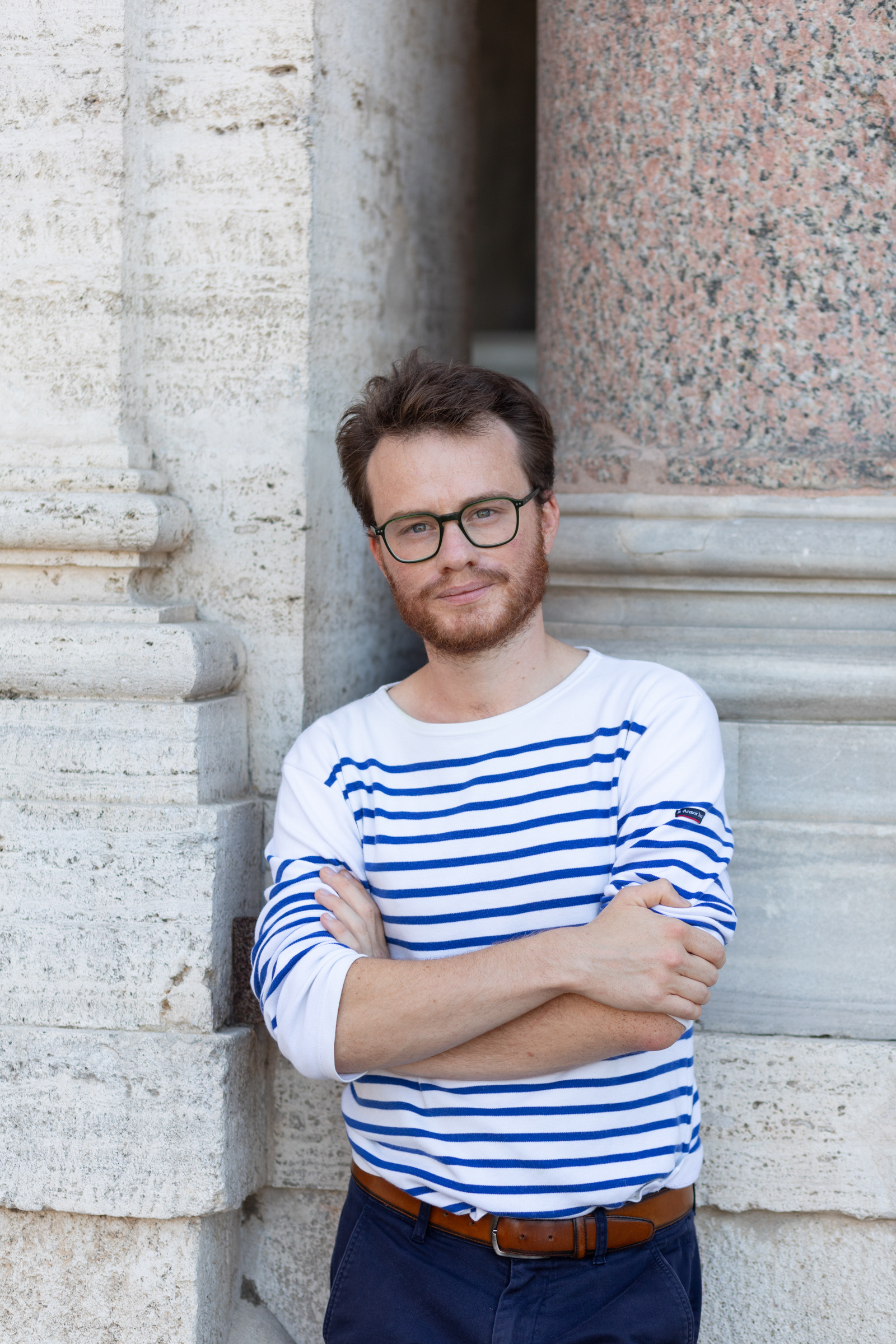Search
Alysée Le Druillenec

Resident
01.09.2022 - 30.09.2022
Medici Residency Daniel Arasse with the École française de Rome
Art history
Biography
Alysée Le Druillenec is a contract doctoral student in art history at Université Paris 1 Panthéon-Sorbonne and Université Catholique de Louvain, under the supervision of Étienne Jollet and Ralph Dekoninck. She has published Beatus Christophorus: saint Christophe à la Renaissance dans les églises de l’Eure (Nonant, 2020), co-authored with Nicolas Trotin. She has published articles in the journals Perspective and Histoire de l’art, as well as in the proceedings of the colloquia Ornamenta Sacra : Late Medieval and Early-Modern Liturgical Objects in a European Context (Leuven, Brepols, 2022) and Études et exercices polysémiques autour de La France apportant la Foi aux Wendats de la Nouvelle-France (Montréal, Presses de l’Université Laval, 2022). This year (2022-2023), she is the recipient of the Daniel Arasse Fellowship for the second time, the Éole Excellence Fellowship, a visiting scholar at the Leiden University Center for Arts in Society, and is taking part in the 69th meeting of the Renaissance Society of America (San Juan, Puerto Rico, 2023) thanks to the support of theItalian Art Society.
Project
Her doctoral research, the subject of her residency at Villa Medici, is: Porter le Christ. Une affaire de famille au XVIIe siècle en France
Thesis supervised by Professors Étienne Jollet (Université Paris 1 Panthéon-Sorbonne) and Ralph Dekoninck (Université Catholique de Louvain).
In the 17th century, the act of carrying the Christ Child, or christophoria as we call it, came to be seen as the translation of the wearer’s conception of his or her relationship with the Christ being carried, but more broadly as that of a certain mode of religiosity, with a strong emphasis on the family dimension. We study the genesis of this valorization in a chronological framework stretching from 1598 to 1715. From the Council of Trent onwards, the cult of Christ-bearing saints took off in a big way, and the fortunes of this posture can be explained by the intense devotional climate in which the pilgrim of the Siècle wandered. But was carrying the Child the reason for their success? Our investigations suggest that this gesture was of particular importance, and that it marked a significant change in the relationship between the Christ figure and Catholic piety. Our corpus includes paintings of the saints Joseph, Simeon, Christopher of Lycia, Hyacinth of Krakow, Anthony of Padua, Françoise Romaine, Rose of Lima, Gaëtan of Thiène and Félix of Cantalice, and examines what links these characters together beyond the Christophoral gesture: the fact of belonging to the Savior’s family.
